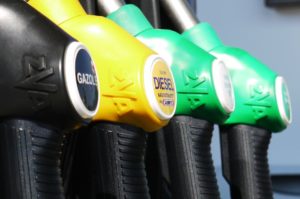Rubber permeability, a crucial property of rubber compounds, denotes the rate at which molecules of specific gases, vapors, or liquids permeate a rubber material. Understanding the permeability of rubber is vital for assessing its suitability for applications such as O-rings, gaskets, and seals.
 Rubber materials must be crafted with superior permeability characteristics when exceptional sealing performance is essential. This often entails utilizing specialized polymers, materials, and techniques to develop a rubber compound that can adeptly meet the specific permeability demands of the application.
Rubber materials must be crafted with superior permeability characteristics when exceptional sealing performance is essential. This often entails utilizing specialized polymers, materials, and techniques to develop a rubber compound that can adeptly meet the specific permeability demands of the application.
Rubber and Permeability
Rubber is a well-known pliable polymer regarded for its elastic properties. Commonly referred to as an elastomer, rubber’s wide use can be attributed to its versatile properties. One in particular is its permeability. In critical seals like O-rings and gaskets, a rubber’s permeable properties are one of the more important considerations when determining its suitability for a specific application.
Permeability, in general, is measured by assessing the amount of pressure required to facilitate the movement of molecules through a given material. The greater the pressure, the lower the permeability, indicating that the material is highly resistant to a particular gas, vapor, or fluid flow. On the other hand, if the molecules can pass through the material with relative ease, the material is considered to have high permeability.
Typically, most rubber compounds exhibit low permeability, making the material ideal for various sealing applications. However, in the design of critical seals, where the transfer rate for certain gases, vapors, and fluids can significantly impact performance, the type of rubber compound used can significantly affect the permeability rates. It’s important, then, that the correct rubber is selected for the application.
Understanding the Permeability of Rubber Compounds
The permeability of rubber can be influenced by several factors, including the type of rubber, the physical and chemical properties of the gas, vapor, or fluids the rubber is in contact with, as well as temperature and pressure conditions. When selecting a seal for an application, it’s important to note that different types of rubber exhibit varying levels of permeability concerning a particular gas, vapor, or fluid substance, making some rubbers more suitable for specific applications than others.
Therefore, understanding rubber permeability is necessary when selecting rubber materials to ensure a specific application’s optimal performance and longevity. Knowing the permeability of rubber is necessary in applications such as O-rings, gaskets, and hoses, where the prevention of liquid or gas leakage is a must.
Why Rubber Permeability Matters
Rubber permeability plays a significant role in maintaining the integrity of seals. The proper functioning of any machinery, equipment, or systems with sealing requirements relies largely on the permeable properties of the rubber material used. A seal’s effectiveness in preventing fluid or gas leakage between two surfaces relies on its permeable properties. If the rubber material selected for an application has high permeability, it may allow fluids or gases to pass through, leading to leakage and potential failure of the entire system.
The permeability of rubber can be influenced by several factors, including the type of polymer used, the duration of exposure, and the temperature and pressure conditions. For instance, in a hydraulic system, an O-ring made of a low-permeability rubber material can prevent hydraulic fluid leakage, ensuring the system’s efficiency and longevity. Similarly, in a fuel system, a seal made of a fuel-resistant, low-permeability rubber can prevent fuel leaks and vapor loss, enhancing safety and reducing emissions.
More specifically, nitrile rubber (NBR) is commonly used in O-rings and seals due to its excellent oil and fuel resistance and relatively low permeability. However, fluorocarbon rubber (FKM) might be a better choice in high-temperature applications due to the material’s superior heat resistance and lower permeability than NBR. On the other hand, EPDM compounds, known for their low absorption rate for water, make them effective seals against water vapors. However, EPDM can absorb oil and gas, which may compromise its efficiency as a barrier in certain applications like motor engines, which NBR materials are better suited for.
Rubber permeability plays an important role in the design of critical seals. Manufacturers of o-rings, gaskets, and hoses carefully select rubber materials specifically engineered to have low permeability. Techniques like adding fillers or using different curing methods enhance the material’s impermeability for further applications.
For more information about rubber permeability and selecting the right rubber to ensure the integrity of your industrial seal application, contact Manufacturer’s Rubber & Supply—your single source provider for all your rubber product needs.

